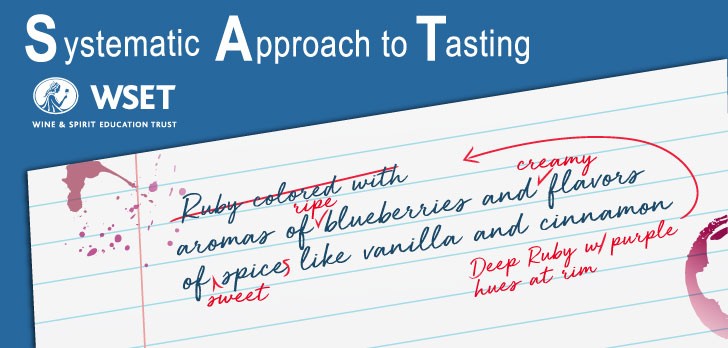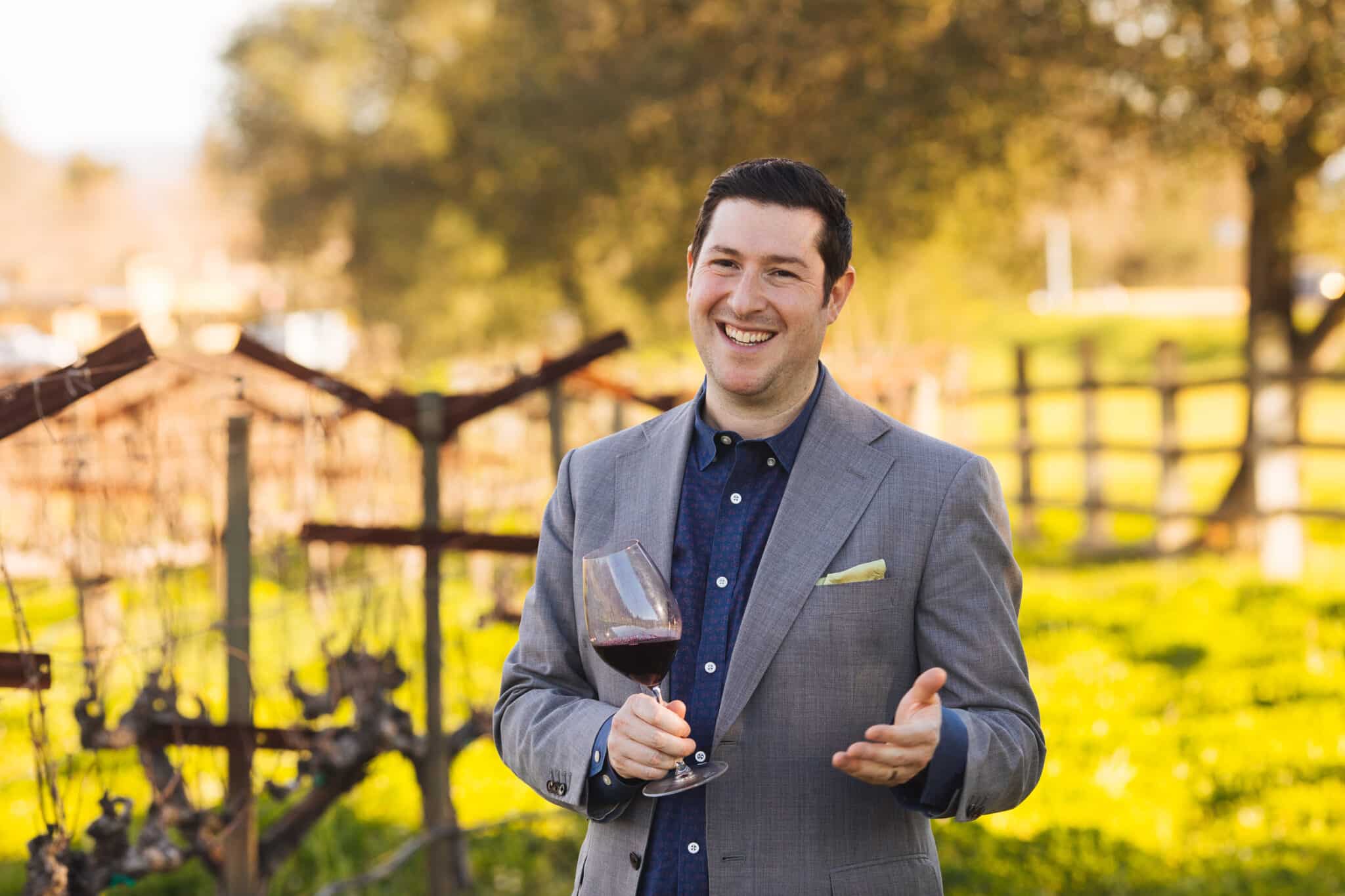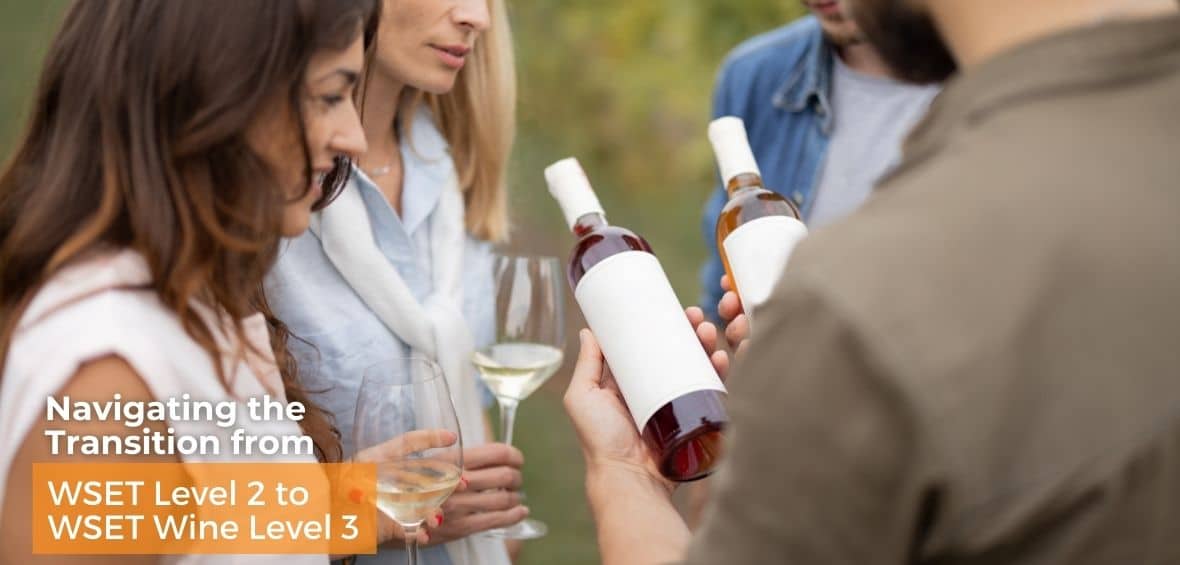By Jonathan Cristaldi
One piece of writing advice that Ernest Hemingway gave to himself was: “Write the truest sentence that you know.” It’s the kind of sage advice I let echo in my mind every time I sit down to write a wine tasting note. If I can write the truest tasting note possible, I tell myself, the person reading it will have a crystal clear sense of not only the aromas and flavors of the wine but of the textures and emotions at play when enjoying a glass.
If you’ve ever been tasked with writing a wine tasting note, or if you’re among those enrolled in any Wine & Spirit Education Trust (WSET) courses, you know how challenging it can be to write a detailed, expressive, and accurate description of a wine. It’s not easy, but that’s why WSET developed the Systematic Approach to Tasting Wine (SAT).
The SAT provides a brilliant framework for describing a wine beginning with the Appearance (how it looks in the glass), leading to the Nose (the aromas), moving on to the Palate (how it tastes and feels in the mouth) and Conclusions that can be drawn, where quality, drinkability, and price are assessed.
Whether you’re a wine writer, blogger, or industry professional in any sense of the title, when it comes to writing tasting notes, it’s imperative that you give it your best-informed shot. Remember that if a person buys a wine based on a tasting note, without having actually tasted the wine, once the cork is popped at home if that description doesn’t hold up to their expectation (based on your note) they’ll be disappointed. They might even think the wine is flawed, and worst of all, they might return it.
Studying the Systematic Approach to Tasting means you’ll have a solid foundation of vocabulary terms to describe aromas and flavor characteristics, as well as how to describe sensations like sweetness, acidity, tannin, alcohol, body, flavor intensity, and length. Mastering these descriptions means tasting a lot and noticing what you’re sensing with every single sip. To know if the sweetness level of a wine is dry, off-dry, medium-dry, medium-sweet, sweet, or luscious, just takes practice. That goes for identifying low, medium, medium-minus, medium-plus, and high levels of tannin, acidity, and alcohol. How do you get to Carnegie Hall? Practice, practice, practice!
But leveraging the SAT’s framework is only half of the equation of writing a good tasting note—the other half comes from being fully attuned to the world around you so that words are backed by real-world memories. For instance, how can you tell that a glass of Pinot Noir has a medium-plus aroma of flamed orange peel if you’ve never taken a match to the rind of an orange and nosed it yourself?
The SAT offers a range of descriptors, but the challenge is to actively suss out those descriptors in real life, to sniff, taste, and file away a memory of each, so that when you’re nosing a glass of wine, those memories instantly rush to the forefront and you’re able to tick off the boxes of specific aroma and flavor qualities. I remember hearing a lecture by Rajat Parr who talked of spending hours upon hours every week of his life in farmer’s markets—tasting, smelling, and filing memories away.
I’ll use Napa Valley Cabernet Sauvignon as a guinea pig to illustrate what I mean. Napa Cabs tend to show lots of black fruit qualities. The WSET’s SAT defines “Black Fruit” aroma and flavor characteristics as “blackcurrant, blackberry, blueberry, black cherry (simple/generic or specific? fresh or cooked? ripe or unripe?)”
Think about it: have you ever sniffed or tasted an unripe blackberry? Sure you have—you know the ones in the basket that taste bitter. Most of us spit those out and dive back in looking for that perfectly fresh, plump, and juicy ripe fruited berry. But where does “simple/generic” or “specific” come into play? Perhaps a wine shows layers of fruit that are quite delineated, and you can taste “fresh-picked Blackberry” and then “ripe blueberry” or even blueberry that is cooked—but more like it’s been stewed or baked and reminds you of the best blueberry pie, or blueberry compote you’ve ever had. Well, to identify such a quality in a glass of wine, you would need to have had it first, filed it into a memory, and be able to recall it all in the few seconds while nosing that Cabernet.
A good tasting note gives the reader a sense of what to expect, but an excellent tasting note transports, gets the mouth watering, taps into a sense of urgency and unlocks a passionate desire to head out and find that wine and drink it right away. Don’t believe it?
Well, you might not be that inspired if the Napa Cabernet you’re reading about is: “Ruby colored with a nose of blackberry, graphite, and earth. The palate is soft and reveals more black fruits, spices, and a good finish. Drink over the next 5-7 years.”
This is a fine tasting note, but what if there’s more to say? What if this was a description of the same wine:
“Deep ruby with purple hues at the rim. Youthful and exuberant aromas are pronounced, showing just-picked blackberry, blueberry and violet florals. Full-bodied on the palate, showing an array of creamy flavors from blackcurrant, black cherry, and blueberry compote to sweet spices like cinnamon, vanilla, and new wood cedar, underscored by blackcurrant leaf, coffee bean, and pops of chocolate and tobacco spice. Perfectly dry, with medium acidity, medium tannin, medium-plus alcohol, and a long finish, this is a lovely, complex, and balanced wine ready to drink now, but capable of aging another 10 years.”
That sounds pretty good, right? I’d like to drink that wine right this minute. Admittedly, it’s a bit heavy on the SAT framework, and, in a real-world tasting note published in a magazine or blog (i.e. outside of a WSET exam) I might tone down the “medium-plus” stuff to something like: “Beautifully balanced with good acidity, svelte tannins, and a remarkably long finish. Enjoy now and will develop complexities over the next decade in a cool, dark cellar.” But you’ve got to master the framework before you can improvise.
Okay, are you ready to write the best-tasting notes you’ve ever written in your life? At least now, you know where to start.














